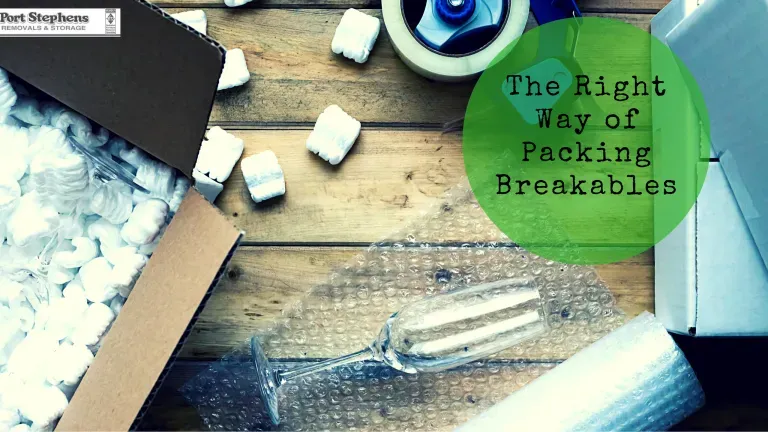The Right Way of Packing Breakables
Packing breakables needs more time and effort than packing your normal belongings. If not done carefully and in the right way, you may end up with chipped or shattered items. Taking those few extra minutes to pay close attention to wrapping and packing your breakables can spare you of the stress and cost of having to replace these items.

Here are a couple of tips on how to properly and correctly pack your breakables:
1. Use the appropriate boxes and packing materials.
Using the proper containers and materials can really ease any worries you may have of accidentally damaging your breakables during a move. Smaller boxes are best for fragile materials. If you can grab some, use boxes that are especially built for packing dishes and other fragile materials. Dish barrels are made using thicker cardboard than normal boxes. This is so that they can better absorb impacts upon movement. However, if you cannot get your hands on these kinds of boxes, you can just use more padding materials. Also, make sure that the padding materials you use, such as packing paper and bubble wraps, are of good quality and can protect your breakables from shock.
2. Carefully wrap your breakables with padding.
Get yourself some packing paper and bubble wraps that are of good quality. Newsprints and cloth may also do. However, they may not be made for cushioning breakables like the papers and wraps from professional movers are. Better quality materials may cost more, but you will be thankful later on for having undamaged belongings.
Make sure you individually wrap each piece of glassware using padding materials. Fold and wrap packing paper or bubble wrap over the entire surfaces of these items. For breakables like glasses and vases that have spaces, fill these gaps using crumpled pieces of packing paper, so as to provide more cushioning. For more fragile glassware like crystals, you can double wrap for an extra layer of protection.
3. Properly place your breakables inside their boxes.
How you place your breakables inside their containers is important. Place all the heavier and sturdier glassware at the bottom of the box, and end with the more fragile and lighter items at the top. This is to bring stability to the box, and to avoid putting pressure on less durable items. Breakables should be lined side by side, with flat-shaped items like plates and mirrors positioned vertically, instead of lying on top of each other.
4. Use more packing paper for more padding.
Do not be afraid to use too much packing paper. Packing paper is your friend and it can provide the much needed cushioning that you should provide your breakables. Use packing paper in order to pad the bottom of your box. Make sure you crumple it instead of folding or stacking. A few inches will do so that your breakables will have a soft layer of packing paper to rest on.
Once you have placed all of your items inside their box, use packing paper to fill in any gaps and spaces between your glassware. If you hear any clunking noises, then you should place more padding inside. Do not fill your box with breakable items all the way to the top. Leave a couple of inches so that you can place a bed of crumpled packing paper similar to the layer you placed on the bottom. This may seem like a lot of padding and paper, but there is no such thing as too much protection for your breakables.
5. Label your boxes accordingly.
It doesn’t matter how carefully you pack your box of breakables if your movers are just going to throw them around anyway. In order to avoid this, you have to properly communicate to the people handling your belongings that those particular boxes contain delicate materials. Simply get a marker and label your boxes at all sides with warnings such as “Fragile” or “Breakable.” This way, the movers will be extra careful with your possessions.
You do not have to fear for your fragile belongings getting damaged or shattered while being moved from one place to another. All you have to do is to follow these few simple tips on the right way of packing breakables.













